4 Reasons why you should visit the Cotswolds
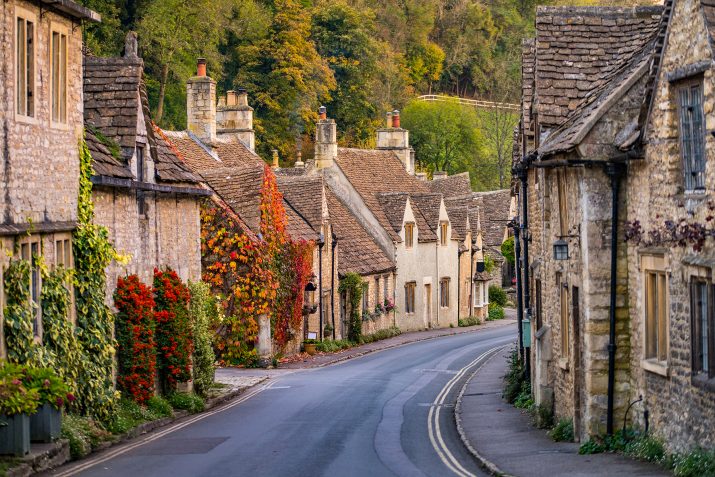
The Cotswolds area of southwestern England is filled with idyllic villages in rustic countryside settings. It covers a large area or more than five English counties. The area was famous for wool production during the Middle Ages. Profits from this industry built the beautiful parish churches and honey-coloured stone mansions that grace the towns and nestle along the banks of rushing streams to create a pastoral landscape that has been named one of England’s ‘Areas of Outstanding Natural Beauty’.
Here are just 4 reasons why you should visit the Cotswolds:
1) Scenic Natural Beauty
Broadway Tower
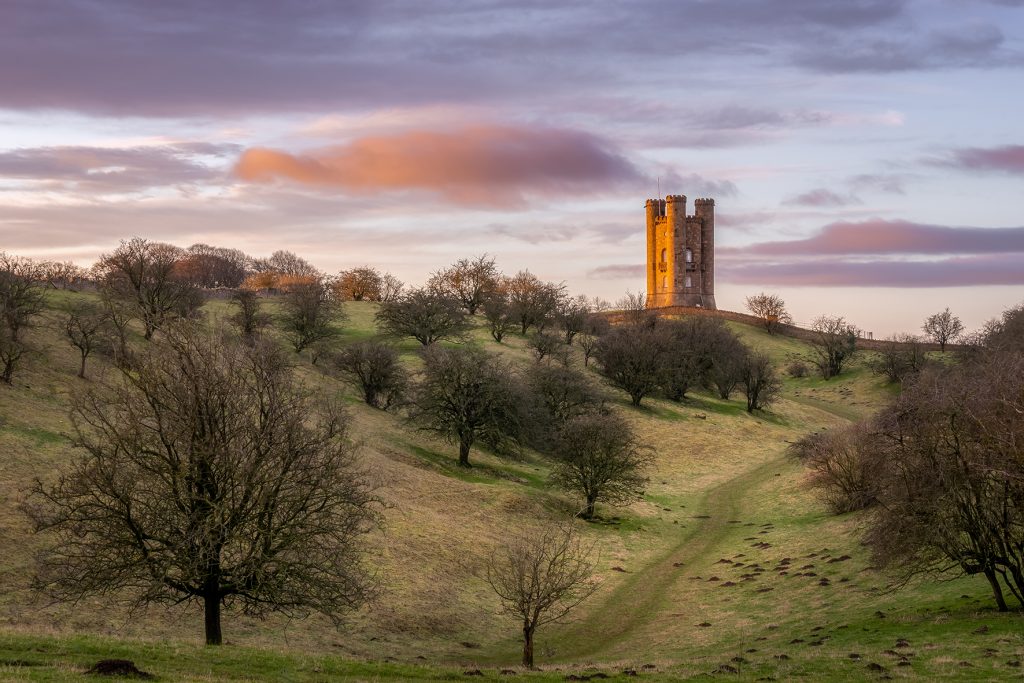
Cotswolds Broadway tower at sunrise
In the countryside outside of the town of Broadway is Broadway Hill, the second highest point in the Cotswolds. Here in 1798 the Broadway Tower was built as a Gothic Folly by the 6th earl of Coventry to add interest to the landscape. Today the 65-foot-tall Tower offers beautiful views over the Cotswold countryside.
Painswick Beacon
Outside of the lovely village of Painswick is a hilltop setting called the Painswick Beacon, the site of an Iron Age hill fort. From atop the hill, glorious 360-degree views encompass the Cotswold hills.
Hidcote Manor and Garden
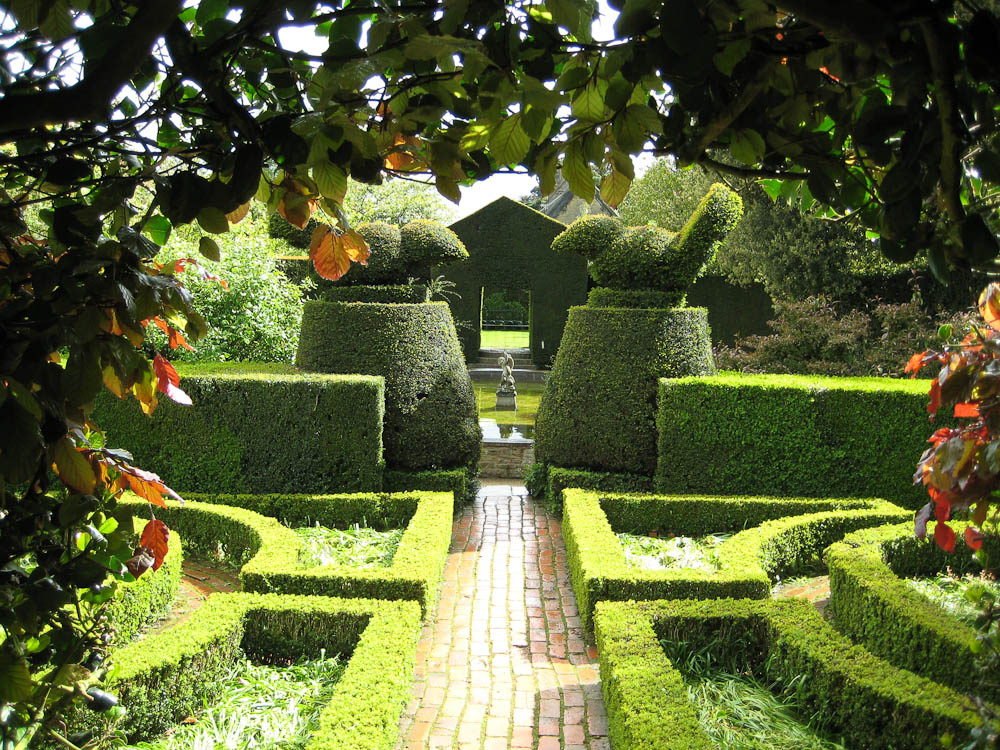
Beautiful Hidcote Manor and Garden (Image from Wikimedia by Pradeep Sanders)
English gardens are world famous for their beauty, and one of the country’s best is Hidcote Manor and Gardens, located near Chipping Campden. The gardens were designed in an Arts and Crafts style, made up of a series of outdoor “rooms”, each with a different character and style, divided by walls and hedges.
2) Explore Charming
Broadway
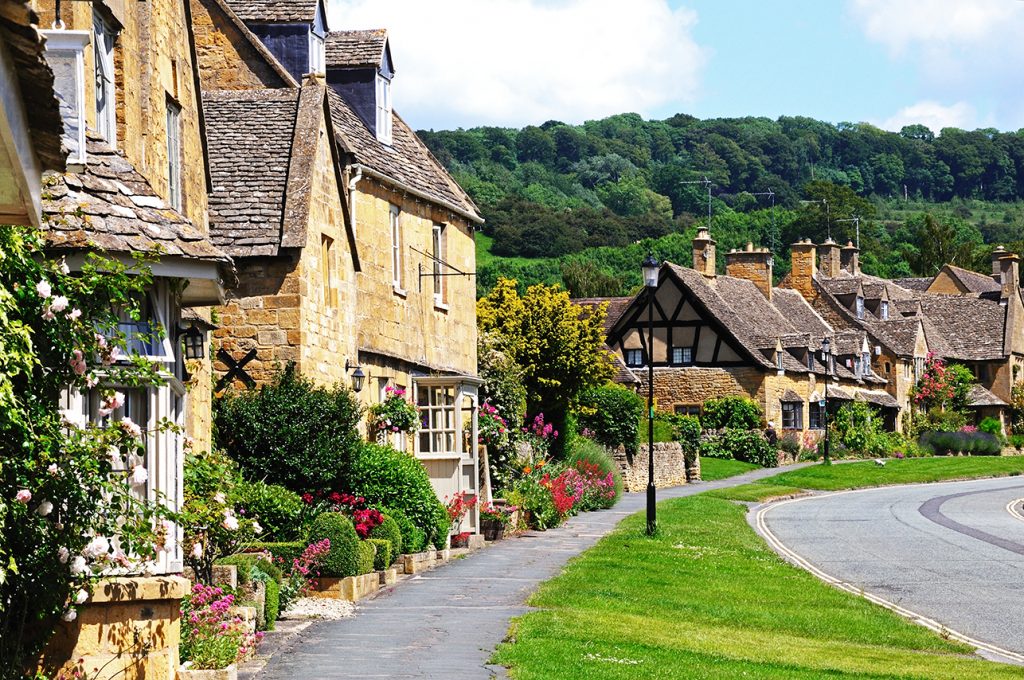
Pretty cottages along High Street, Broadway
Broadway is built around its central broad High Street lined with horse chestnut trees along with shops and restaurants, art galleries and antique stores. There’s a traditional village green, pubs to get cosy in and those famous golden-hued Cotswold cottages.
Bourton-on-the-Water
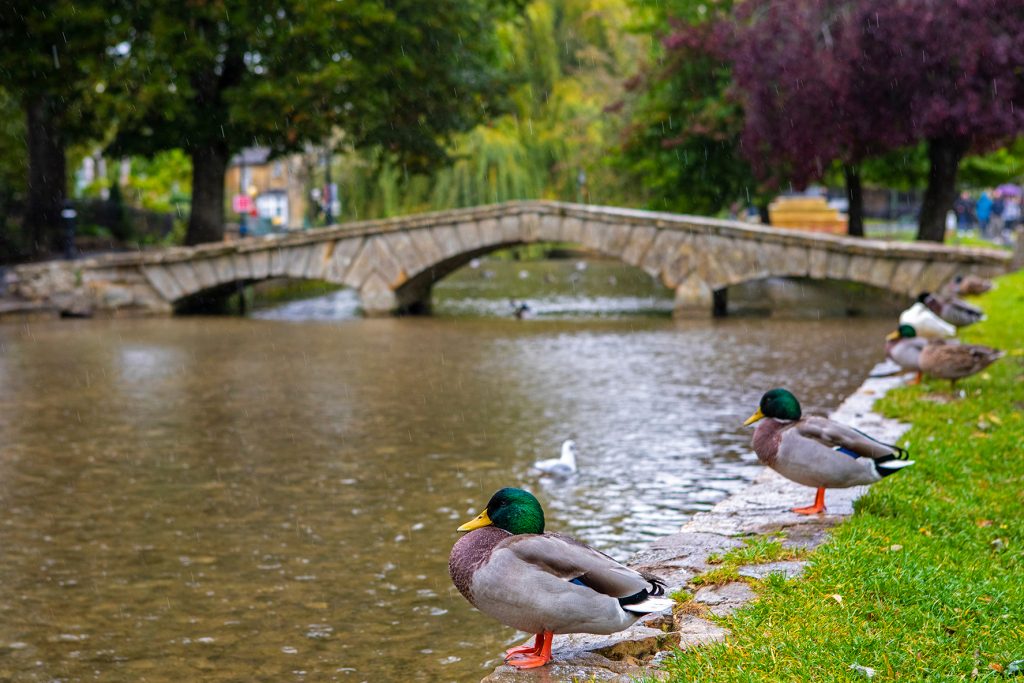
Ducks relaxing on the banks of the River Windrush in the village of Bourton-on-the-Water
Bourton-on-the-Water is known as the Venice of the Cotswolds because of the charming low 18th century bridges that span the River Windrush as it flows through the town. Traditional cottages that have been converted into pubs, and shops sit picturesquely along the riverbanks. A model village at the Old New Inn depicts the town as it appeared in 1937.
Lower and Upper Slaughter
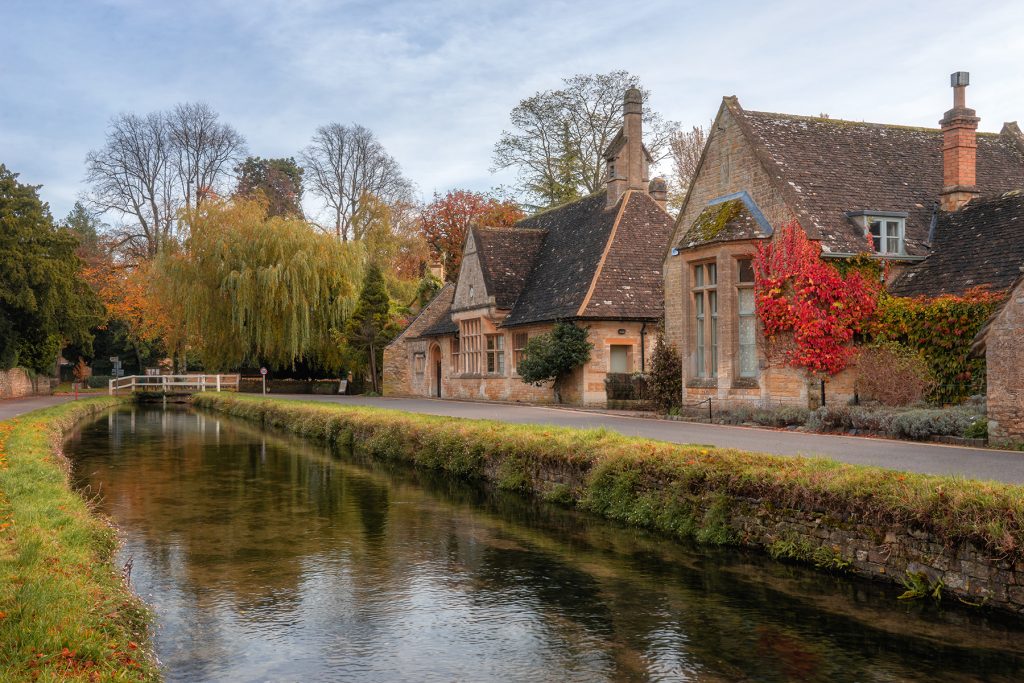
Lower Slaughter in the Cotswolds in Autumn
With the River Eye trickling through town over picturesque small bridges, Lower Slaughter is one of the loveliest Cotswold villages. Caramel-coloured stone buildings are set along the stream, and its Old Mill houses a craft shop, tearoom and breadmaking museum. A leisurely one-mile stroll brings you to the sister town of Upper Slaughter, equally charming with its riverside setting and traditional cottages.
Bibury
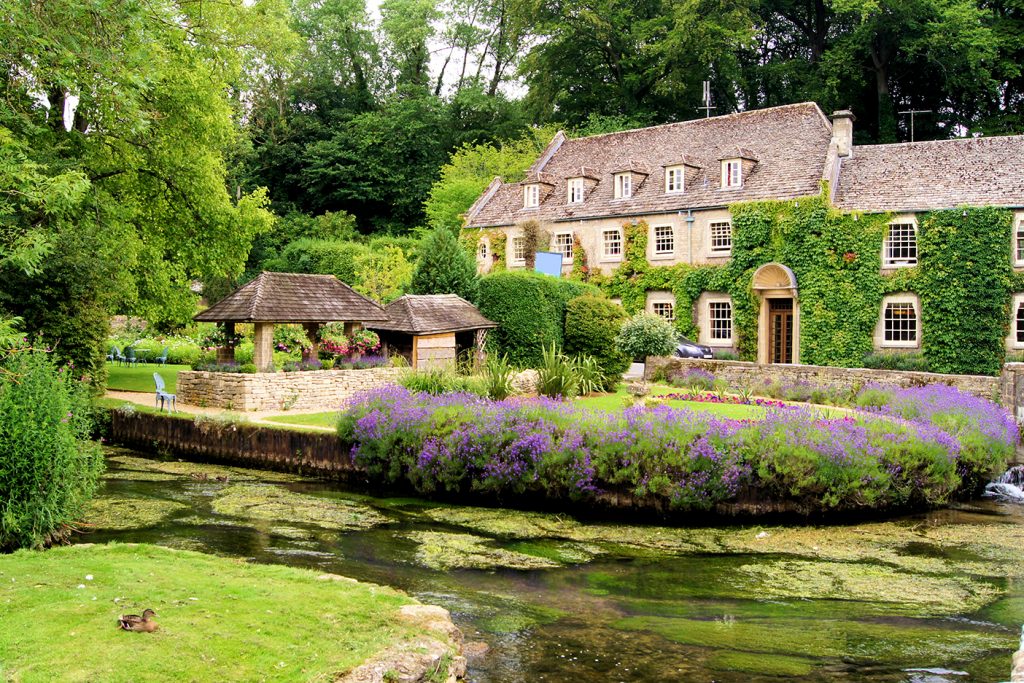
Picturesque garden in the Cotswold village of Bibury, England
Bibury is famous for Arlington Row, a cluster of 17th century stone weavers’ cottages overlooking the River Coln. Another worthwhile stop in the pretty village is St. Mary’s Saxon Church near the village square.
Stow-on-the-Wold
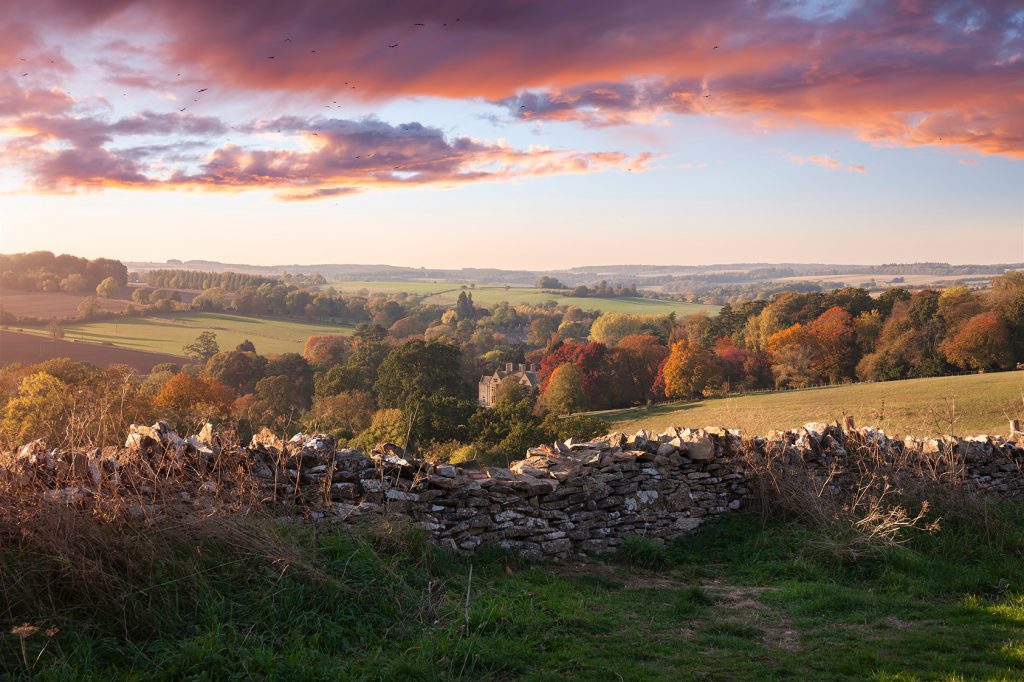
View from Stow-on-the-Wold, Cotswolds, England
Stow-on-the-Wold perches on a hilltop and is the highest town in the Cotswolds. The north entrance of St. Edwards church is framed by ancient trees and is one of the town’s most photographed spots. The village has been an important trading centre since Roman times.
Chipping Campden
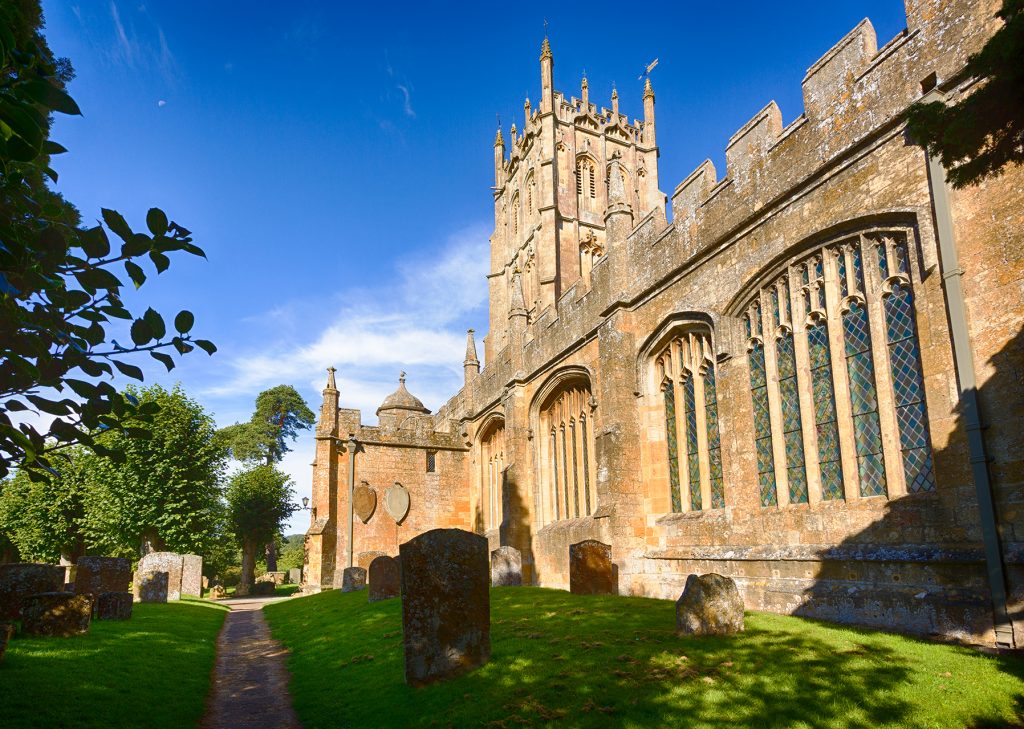
St James Church and graveyard in old Cotswold town of Chipping Campden
Chipping Campden boasts a variety of architectural styles, from the 1627 Market Hall to the Jacobean gatehouse of the Old Campden House. St. James Church is considered to be the finest “wool church” in the Cotswolds. The Court Barn Museum of Craft and Design is the place to learn about and buy crafts such as textiles and pottery.
Painswick
Painswick is a historic mill town nestled in the Cotswold hills and surrounded by spectacular countryside. The churchyard of the 14th century Church of St. Mary is famed for 99 magnificent yew trees. Walking options are plentiful, as the Cotswold Way walking trail passes through the town.
3) Fascinating Historical Destinations
Stratford upon Avon
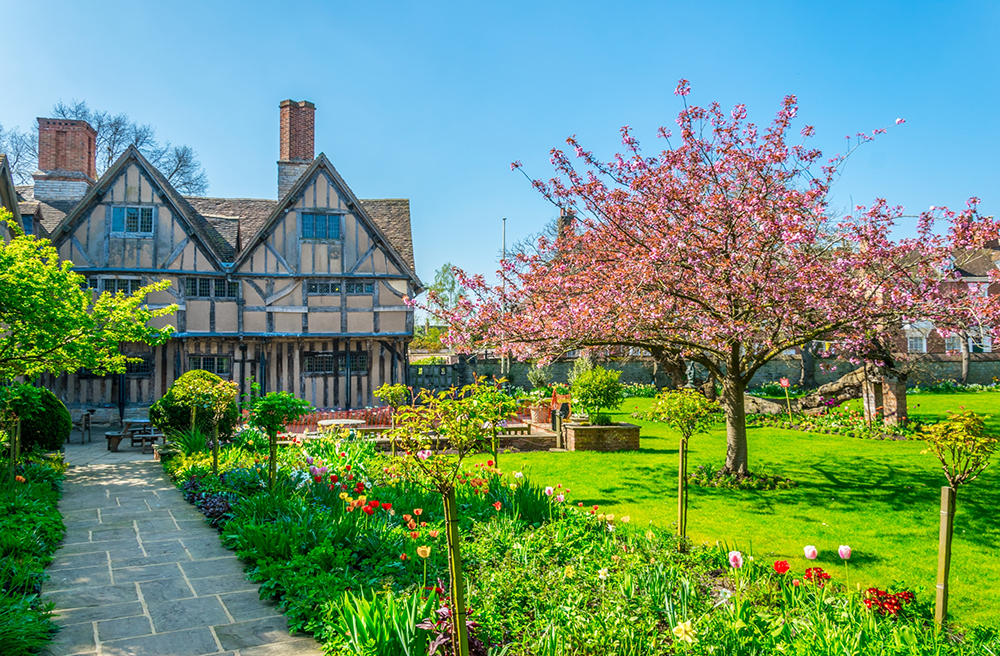
View of the Hall’s Croft gardens in Stratford upon Avon, England
Just to the north of the Cotswolds lies the town of Stratford upon Avon, famed as the birthplace of William Shakespeare. Visits here can take in Shakespeare’s birthplace and the countryside cottage and gardens of his wife Anne Hathaway as well as his burial place in Holy Trinity Church. The town is attractively set on the banks of the River Avon, where swans slowly glide, and visitors can take leisurely boat tours. The Royal Shakespeare Theatre provides some of the world’s best theatrical experiences.
Chedworth Roman Villa
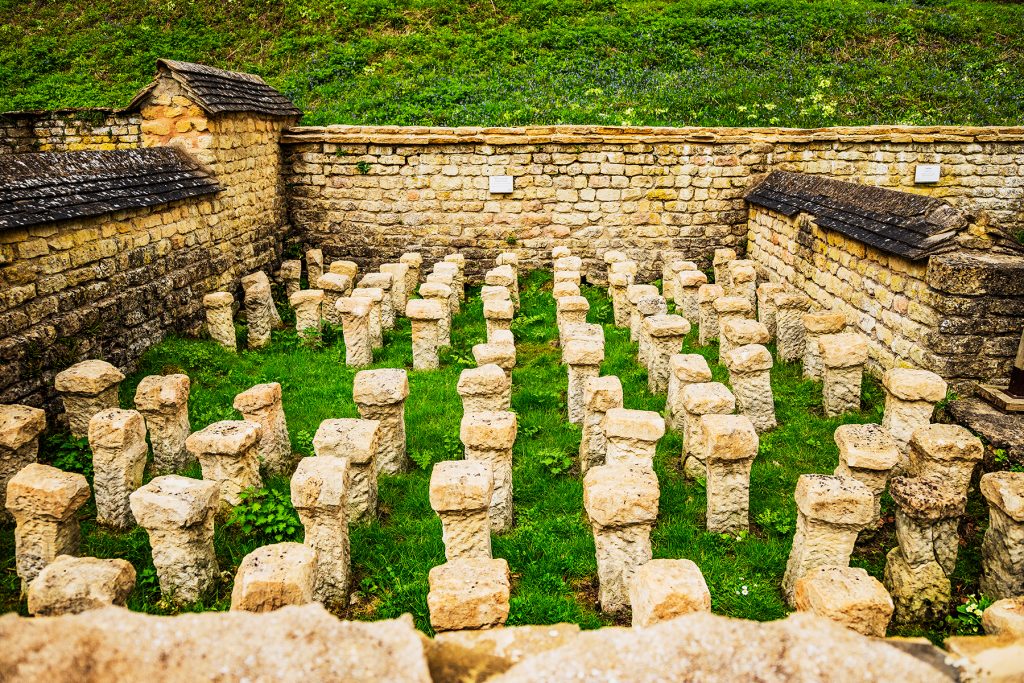
Chedworth Roman Villa is one of the largest Roman villas in Britain.
Located just outside the town of Cheltenham Spa, the Chedworth Roman Villa is what remains of the largest Roman villa in England. Built between the 2nd and 4th centuries A.D., it was excavated in 1864 and houses a beautiful mosaic corridor and a fascinating museum with many recovered Roman objects from the site.
Cirencester Amphitheatre
Another relic from Rome’s British occupation is the amphitheatre at Cirencester. Dating from the 2nd century A.D., the amphitheatre housed up to 8,000 theatre goers.
Sudeley Castle
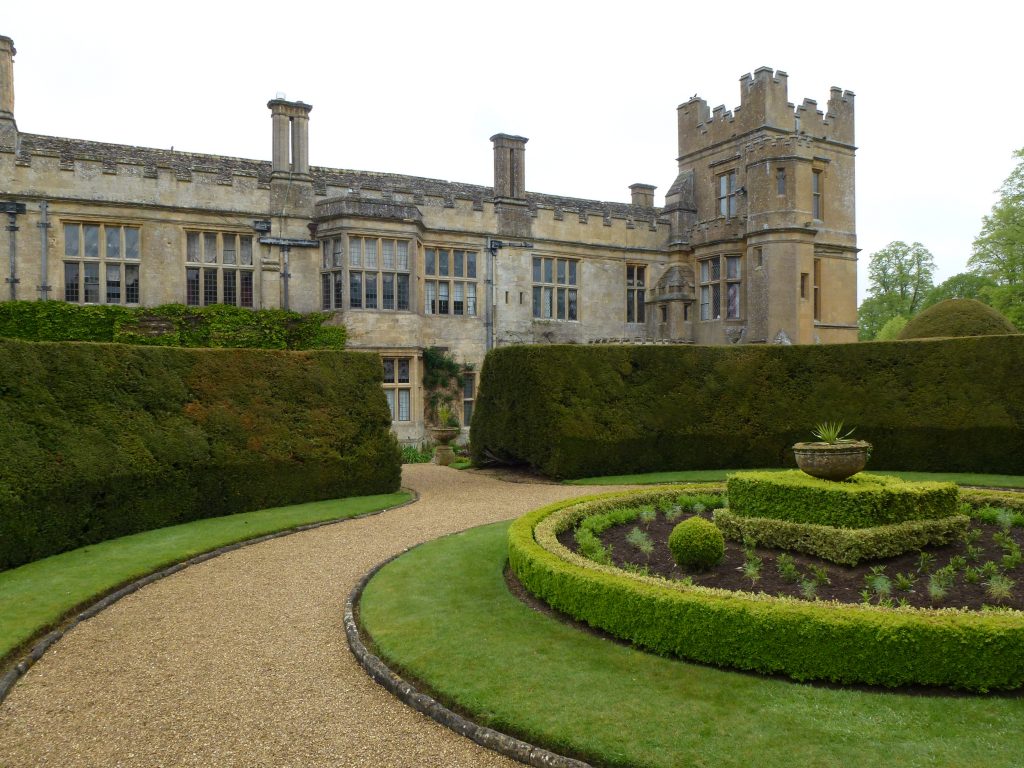
Sudeley Catsle (Image from Wikimedia by Gary Bembridge)
Located in Winchcombe, Sudeley Castle is famed as the burial location of Katherine Parr, the last wife of King Henry VIII. The castle was constructed in the 1440s and contains some of the most beautiful gardens in the Cotswolds.
Berkeley Castle
Berkeley Castle was originally built to keep out Welsh invaders and has been home to the Berkely family for over 850 years. It sits in over 6,000 acres of beautiful parkland, and its rooms include elegant drawing rooms with antique furniture, a medieval kitchen, dungeon, as well as gardens.
4) Entertaining Seasonal Festivals
The ‘Big Feastival’ held each August at musician Alex James’s farm near Kingham in the Cotswold countryside is, as the name suggests, food focused. Celebrity chef’s offer food demonstrations and there is an abundance of street food along with musical performances. Tetbury’s Classical Music Festival is held in in an early Georgian Gothic church and the Cheltenham Jazz Festival is another great annual happening to watch for.
Other events to look for include the Broadway Arts Festival, the Tewkesbury Medieval Festival, the Cotswold Show in Cirencester, and the Cheltenham Literature Festival.

